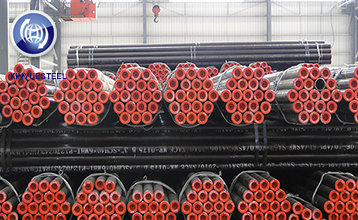The logic behind the iron ore price halved
Oct. 19, 2021
From 2020 to May 2021, iron ore prices have risen all the way, and in May 2021 they set a record, reaching USD 233/ton. Since the second half of 2021, iron ore prices have fallen precipitously. As of the close of September 17, the main iron ore futures contract fell to 629 yuan/ton, a decline of 53%. On September 22, China's iron ore price index fell to 398.76, down about 50.8% from the highest point of 810.17 on May 12, showing a "half-cut" trend. During the same period, the spot price of iron ore "slowed down". As of September 16, the offer price of 61.5% PB powder at Qingdao Port was 864 yuan/ton, down 106 yuan/ton on a week-on-week basis. As of September 24, Qingdao Port's 61.5% PB powder was quoted at RMB 746/ton, which dropped another RMB 48/ton on a week-on-week basis, and the price continued to fall. The industry believes that the reasons for the decline in iron ore prices are as follows:
First, demand continues to weaken, which is the main reason why iron ore prices are "halved". Since the end of last year, "carbon peak" and "carbon neutrality" have become new directions for industrial development. The country has made it clear that crude steel output this year cannot exceed the level of the same period last year. According to the National Bureau of Statistics, China's crude steel output in August was 83.24 million tons, a year-on-year decrease of 13.2%; the average daily output was 2,685,200 tons, an average daily decrease of 4.1% from the previous month. According to statistics from the China Iron and Steel Association, in mid-September 2021, key statistical steel companies produced a total of 1.9135 million tons of crude steel, of which the daily output of crude steel was 1.9913 million tons, a decrease of 2.62% from the previous month. As steel companies limit and reduce production, crude steel output has declined, and demand for iron ore has continued to decrease. The pace of steel companies’ purchasing has slowed down, and market speculation has weakened, resulting in a continuous decline in iron ore market prices.

Second, the guiding effect of the national macro policy has appeared, effectively restricting the substantial increase in commodity prices. In the process of rising "black" futures prices, steel prices have risen much lower than mine prices, and long speculative funds have continued to speculate. In this context, relevant state departments have stepped up efforts to stabilize prices with market-based measures, and issued a series of regulations to rectify the virtual "platform economy", regulate futures trading, and resolutely combat hoarding, malicious speculation, and price-raising behavior. China Securities Regulatory Commission, China Securities Regulatory Bureau, Futures Exchange, China Futures Market Monitoring Center, and China Futures Association have initiated "five-in-one" regulatory measures for iron ore and other trading products, in order to exert regulatory force and strictly regulate market transactions. Severely crack down on illegal and illegal transactions, and "zero tolerance" for illegal and illegal transactions, thereby effectively curbing illegal and illegal activities such as speculation and malicious speculation in iron ore futures trading.
The third is to "replace iron ore with scrap steel" to increase the output of short-process electric furnace steelmaking and reduce iron ore consumption. This year, iron and steel companies have achieved significant results in three aspects: increasing the proportion of electric furnace steelmaking, reducing iron ore use, and reducing carbon dioxide emissions. It is understood that last year, the consumption of steel scrap for steelmaking was 233 million tons, and the ratio of steel scrap for steelmaking was 21.8%. The scrap ratio proposed in the "Thirteenth Five-Year Development Plan for Scrap Iron and Steel Industry" was completed two years and three months ahead of schedule. Reach the 20% goal. By the end of the "14th Five-Year Plan" period, the national steelmaking scrap ratio will reach 30%. Undoubtedly, the increase in the proportion of electric furnace steelmaking in the steel industry has also largely contributed to the decline in iron ore prices.
Fourth, the domestic iron ore output has increased substantially, reducing the dependence on foreign ore. Since the beginning of this year, the development of China's iron ore industry has accelerated, and the output of iron ore and the investment quota of iron ore mining projects have achieved "double growth." According to the National Bureau of Statistics, the national iron ore output in August was 83.915 million tons, an increase of 5.6% year-on-year; the cumulative output from January to August reached 658 million tons, an increase of 14.2% year-on-year, and the annual output will reach 987 million tons. This is the first time since the beginning of 2018 that it has approached 1 billion tons. At the same time, investment in iron ore mining projects has increased. From January to August this year, China's ferrous metal mining and dressing industry's fixed asset investment increased by 21.4%. Among them, the ferrous metal mining and dressing industry's private fixed asset investment increased by 20.4%, both achieving double-digit growth.



